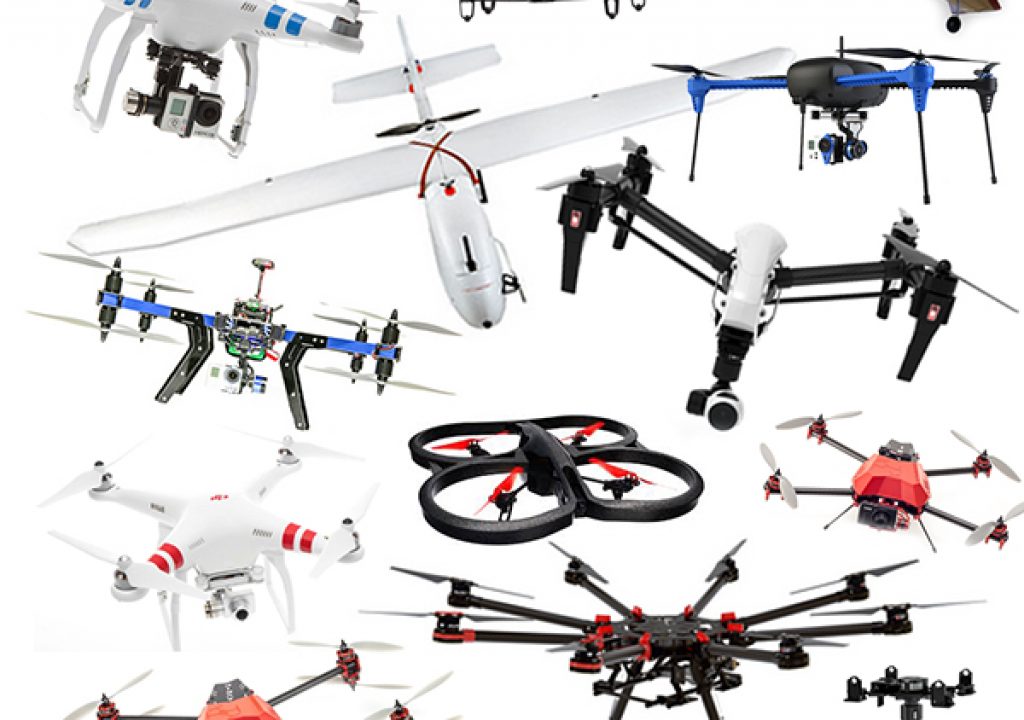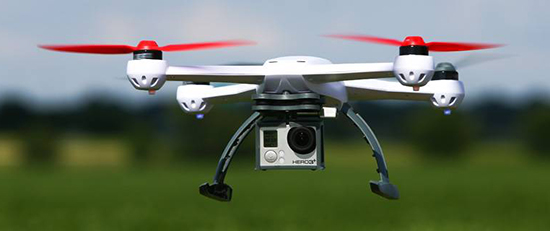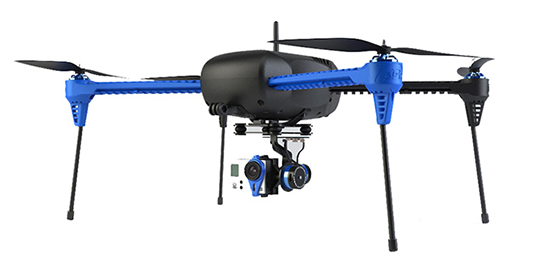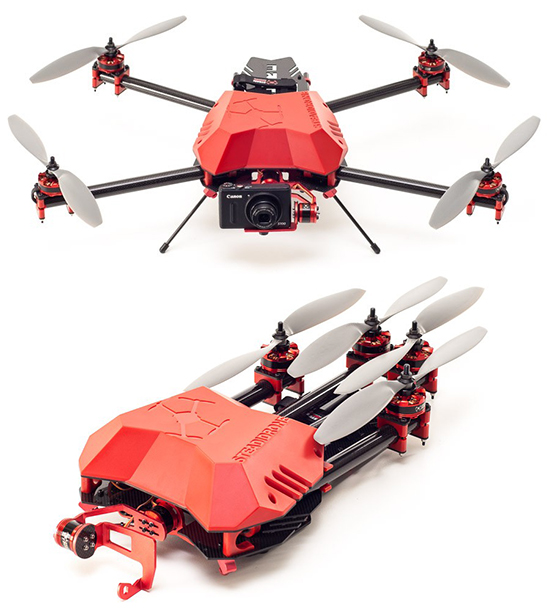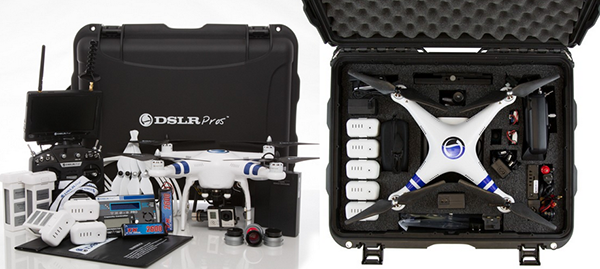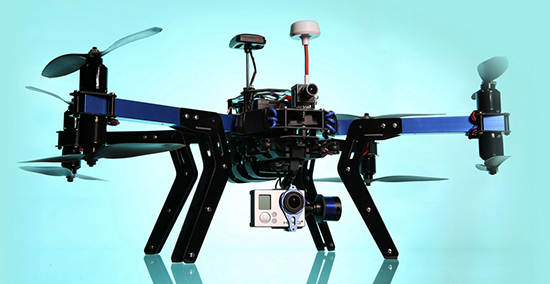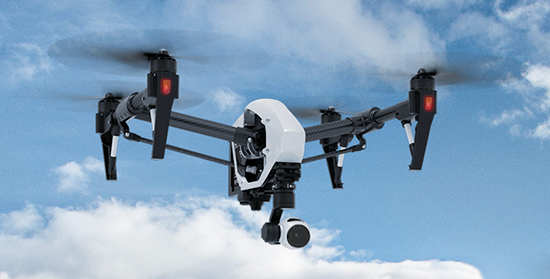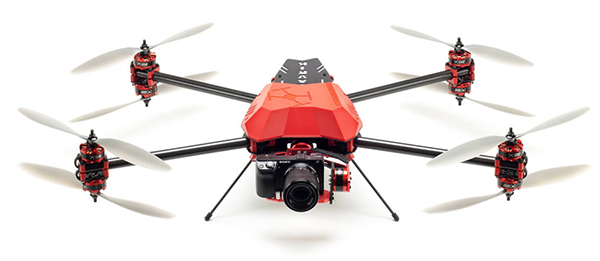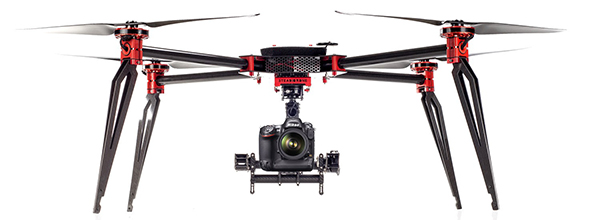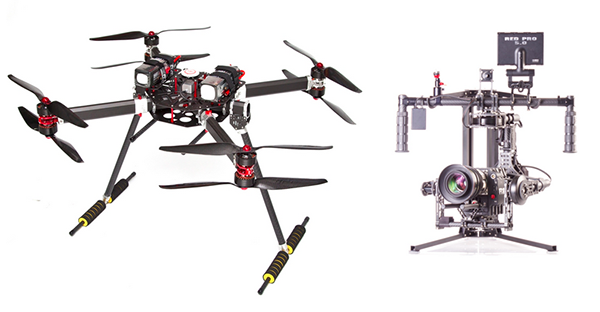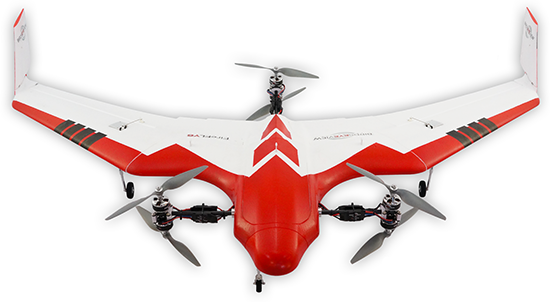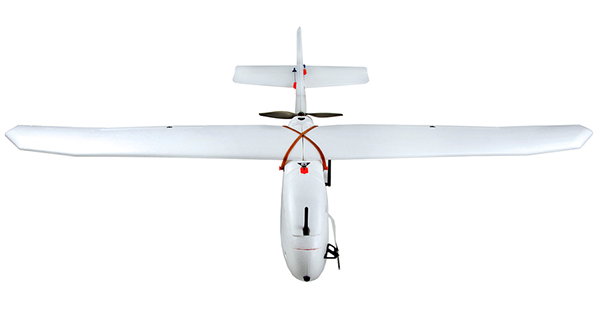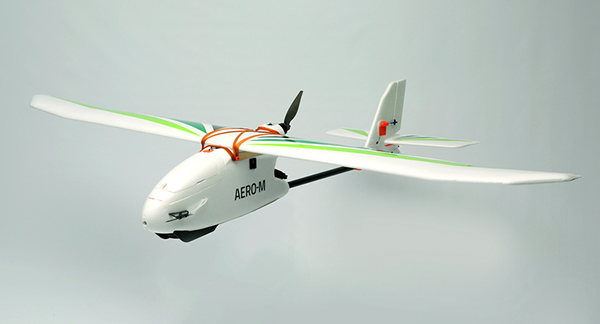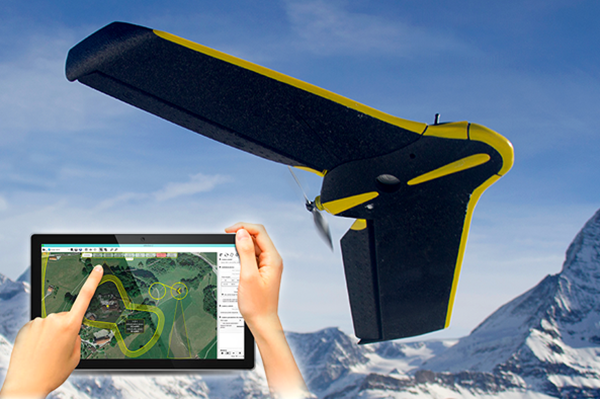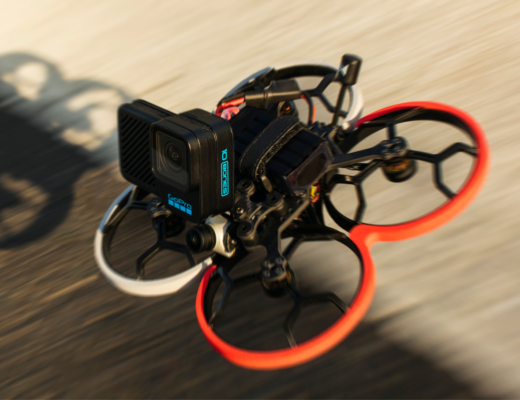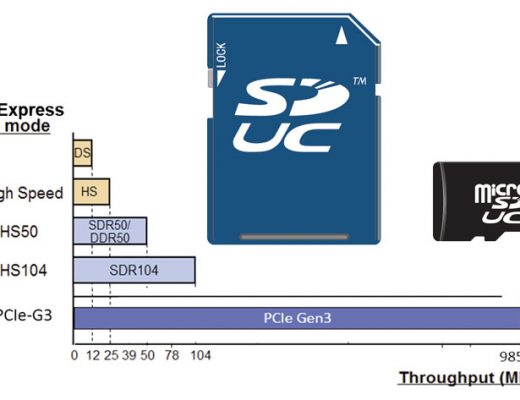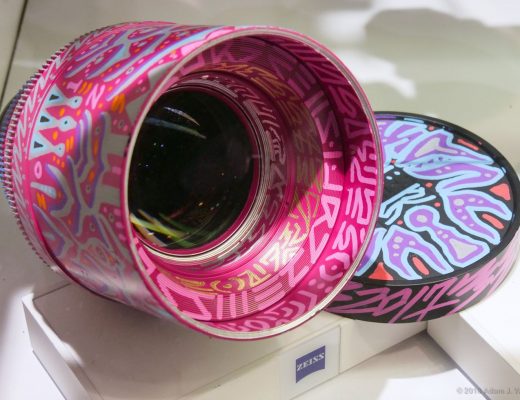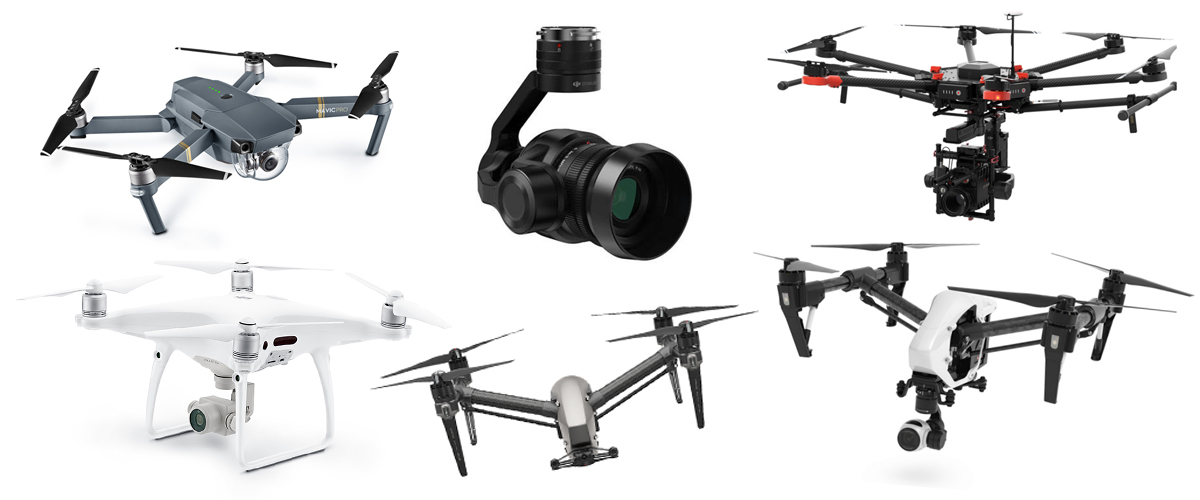2014 has been an amazing year for aerial/drone photography and video, and I’ve compiled a list of great products that will appeal to fliers and shooters for all levels!
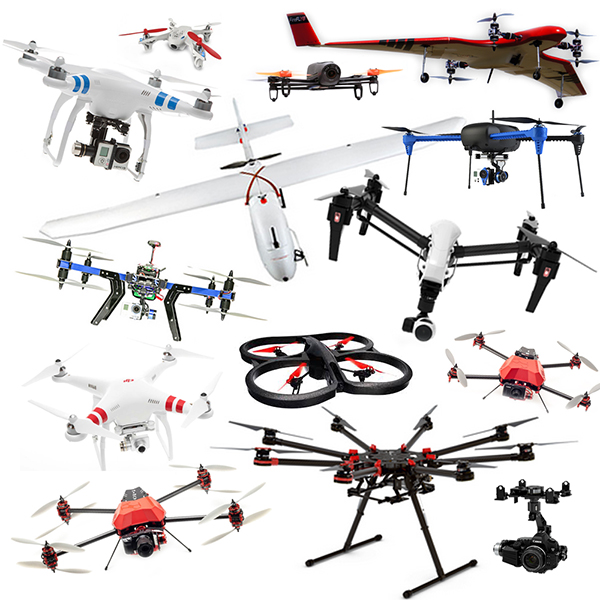
The aerial photography/videography industry has literally taken off this year and so many enhancements, improvements, options and developments in sUAVs and personal drones. We’ve seen advancements in 3-axis gimbal technology, providing smoother aerial videos; new craft designs that allow more control and flexibility in getting those “impossible” shots; improved camera options like the GoPro HERO4 Black, the Blackmagic Design Pocket Cinema Camera and the Panasonic Lumix GH4 DSLR, and many more choices and options for all levels of fliers/shooters.
I’m asked almost daily in my blog or social media communities, as to what would be the best craft to start with or for a specific need. That’s really a loaded question, usually, because it all depends on what you’re trying to achieve and how much time/money you can afford to put into it – and if you’re looking to start shooting commercial productions right away. So I’m compiling a list of products here and how they can be used for various purposes. If you really want to analyze as to what kind of UAV/Drone you might need, check out this online guide with charts from the DIY Drones forums. It’s not completely up to date but it will help get you in the ballpark on the different airframes/vendors out there.
I’ve decided to separate this guide into several “classes” – from the smaller “toy” class (perfect for learning to fly with) to the builder/maker class of small UAVs, to the RTF (Ready To Fly) Quadcopters all the way up to the heavy-lifter hexes, octos and X8s. And since I’m only interested in presenting you with options that you can shoot video and/or photos with and/or have FPV (First Person View) capabilities for training or shooting, I’ll only be listing the best choices in each category covered here. Another emerging class that I’ll cover in another article altogether is the FPV “sport” or “racing” class – primarily of DIYers and Makers that fly mini quads with FPV goggles, lightnign fast in challenging courses; and are a lot of fun to fly, but not practical for inclusion in this year’s aerial video gear guide.
And obviously I can’t include EVERY airframe manufacturer on the market today, so this is just my opinion of some of the most popular currently available; there are a LOT of new UAVs in development and production, through Crowdfunding campaigns and small manufacturer prototypes out there. This list is growing every month, but as of Dec, 2014 this is my current go-to list for the most popular kits out there. Sorry if I don’t list your favorite brand – if they make it thorugh the next year unscathed, I’m sure they’ll be added to the 2015 list.
1: Toy Class – Intro Level
This class is still quite amazing and often useful in training yourself on how to fly a multirotor in various conditions. Since these entry level craft fly in primarily a gyro-stabilized manual mode and don’t have on-board GPS, they help you gain experience with the controls and orientation of the craft. The craft listed here all have some kind of FPV (First Person View) capabilities with a built-in camera. Plus, they’re just plain fun to fly and perfect for any age/skill level!
• Hubsan H107D FPV X4 Mini RTF Quadcopter
If you look on the hobby sites, in the stores and all over Amazon, you’ll find thousands of these little micro quads for less than $100. Last year around this time, I did a review on the Hubsan H107D FPV X4 because it has a built-in camera and you can record the live FPV feed to an SD card on the remote. Because of this feature alone, I’ve selected it to represent this class of quadcopter, but that doesn’t mean it flies the best. There are several hobby-level micro/mini quads out there that are more responsive and longer flight times than this guy, but I recommend getting one to practice with in your home, at the office or around your back patio. It will help you learn stick controls and orientation and improve your flying skills with practice and they’re quite resilient when you crash. Props are cheap and you’re need lot of spares – the same with the mini LiPo batteries. But don’t count on the FPV being very good and the video recording isn’t great either. You can get the Hubsan H107D FPV X4 for around $160 on Amazon.
• Blade Nano QX FPV RTF with SAFE
Mini but amazingly mighty! The Blade Nano QX FPV RTF is a more advanced “toy” that allows you to use a regular controller like a Spektrum DX7 and really learn to fly with more professional controls. This model also features FPV with an on-board camera so you can fly with headset goggles like the Fat Shark Teleport V4. These aren’t as cheap as the Hubsan but again, being a micro sized quadcopter, your “crash” effects will be much less impacted as they would a larger craft. These retail around $150, without the controller.
• Parrot AR.Drone 2.0
The Parrot AR.Drone 2.0 quadcopter is still in the “toy” class but offers some pretty cool features and is larger than the minis. You don’t use a regular controller, but rather your mobile device with an app you download from either the Google Play Store (Android) or on iTunes (iOS). It has a built-in camera that allows you to view your FPV on your device as a monitor while getting the nav data on screen as well as your thumb controls. Low-latency streaming of the 720p 30fps H.264 video is captured directly on your device or with a USB flash drive. Videos and photos can be then uploaded instantly from your device to the Internet. This makes the AR.Drone 2.0 a pretty slick tool for capturing live events you want to share with the world for a reasonable price. With several configurations, you can pick one up off Amazon from between $300-$650.
• Parrot Bebop Drone (+ Skycontroller)
Parrot is releasing what was first the AR.Drone 3.0, now named the Bebop Drone, which will work similarly with your mobile device or in conjunction with their new Skycontroller, which gives the user control joysticks on either side of the tablet device you mount in the middle, plus a WiFi extender to allow a further range of flight controls. This quadcopter has less bulk than its predecessor and features a built-in HD 1080p camera that’s 3-axis stabilized internally, and also deliver 14MP still images. The new app also features more advanced features such as GPS flight plan mapping and the Freeflight 3.0 app that gives the user more advanced controls and options. This is pushing the limits from merely a “toy” to a more advanced prosumer product. It’s exciting to see how far this technology is getting pushed these days! The Bebop Drone is slated to be available early December and will retail for $499 or combined with the Skycontroller for $899.
2. RTF (Ready To Fly) Class – Basic Quadcopters
This class of UAVs is geared toward the photographer or videographer that wants a quick and easy aerial RTF (Ready To Fly) solution. You just want to “get those cool aerial videos, landscapes and panos” that everyone else is sharing online these days. These are considered the “prosumer” level craft and will help get you in the sky quickly and easily – most with an out of box, charge and go experience. You can still get good results – including 4k video (GoPro HERO 4 Black) and 14MP RAW still images (DJI Phantom 2 Vision+) so they’re far from being considered “toys”.
However, do know that it takes a lot of practice to master flying these craft, even if they appear to “fly themselves” – go slow and follow the instructions.
No, really. RTFM!! Seriously… (and watch a lot of YouTube instructional vids!)
• DJI Phantom 2 Vision+
The DJI Phantom 2 Vision+ is an all-in-one package that includes the quadcopter, controller, WiFi extender and built-in camera on a 3-axis gimbal for super stable video. All you need to provide is your smartphone or mobile device to operate and control the camera and set-up the crafts’ options. This quadcopter will average around 20-25 minutes of flight time and has an automated RTH (Return To Home) feature should it get out of range or lose connection with the remote. It will automatically fly back to it’s original take-off point and land itself safely.
The camera records 1080p/30 and 720p HD video to the on-board Micro SD card, as well as 14MP RAW/JPG still images. The camera lens is approx 110-degree FOV. All of the nav data and system/camera features appear on your mobile device screen, running the DJI Phantom Vision App, available for both Android and iOS devices.
I wrote a Hands-on Review of the DJI Phantom 2 Vision+ earlier this year here on PVC and provide samples for a few of the test flights. It retails for about $1200 (or $1369 with an extra battery)
• Blade 350 QX2
More of an entry-level quadcopter than the more known competition, the Blade 350 QX2 is designed for newer fliers that want to get their GoPro in the air without breaking the bank. It utilizes an APM flight controller (3DR) and features a 3000mAh LiPo battery for extended flight times up to about 20 minutes. The basic setup includes a full-range Spektrum DX4 transmitter in a RTF kit for about $500 retail. There are other configurations and available, including the Blade 350 QX2 AP which includes a Blade GB 200 2-axis brushless gimbal and an E-flite C-G01 HD FPV camera, which copies the form factor of a GoPro, but with much more limiting capacity.
You can also mount a GoPro with this gimbal setup if you chose. However, the 350 QX2 AP with camera does include the FPV built-in and allows you to use their own smartphone app to control the camera remotely, as well as preview the FPV camera in flight – all for about $900 MSRP.
• DJI Phantom 2 (with H3-3D 3-Axis Gimbal for GoPro)
The DJI Phantom 2, configured with the H3-3D 3-axis gimbal for GoPro, offers a solid prosumer aerial solution. Using the same Phantom 2 airframe as the Vision+ and an updated controller that includes a tilt wheel for the camera and new anti-static digital compass for more accuracy, you can get up to 25 minutes of spectacular aerial video from your GoPro HERO3, 3+ or 4 Black. The Phantom 2 comes pre-assembled and RTF (Ready To Fly) – just charge the battery and attach the self-tightening props and take off.
If you wish to get only the Phantom without the gimbal for shooting still images with your GoPro, you can buy the basic configuration (retails for $679) or with the H3-3D gimbal for GoPro for $959.
Additional options include Lightbridge HD FPV, IOSD Mini flight data controller or use Ground Station on an iPad to set waypoints, flight plans and more.
• 3DR IRIS+
The newly-released 3DR IRIS+ is latest update to the company’s hardware lineup, as their entry-level quadcopter. Earlier this year, I’ve covered articles on 3D Robotics and their mission and vision, plus the announcement of Sir Richard Branson’s investment into the company and its technology. Since then, I’ve seen some amazing technology being developed by their engineers and with the addition of Colin Guinn leading their new marketing team and helping to drive their prosumer hardware development, the new IRIS+ is the first horse out of the gate with many updated features. (Note: I’ll be doing a full product review on this quadcopter later this month). The 3DR IRIS+ can be flown with or without the camera and can be fitted with the optional Taro T2 2-axis gimbal for your GoPro. It’s truly RTF (Ready To Fly) – just charge the battery and attach the self-tightening props and you’re ready to go. The new configuration gets you about 15-20 minutes of flight time fully-loaded.
The 3DR IRIS+ also features the Pixhawk autopilot flight controller, which provides stable GPS manually-controlled flight with their multi-channel transmitter, as well as their famous “Follow Me” mode, which allows the “flying robot” to track your movements for a hands-free second person crew to shoot your outdoor adventures. The flight planning software and tablet apps will allow you to make map-based missions that will provide you with autonomous image and data collection, providing a sophisticated workhorse as well as a great prosumer image-capturing aerial vehicle. The 3DR IRIS+ lists for about $750 for the basic unit up to around $1600 with FPV, a Tarot T2 2-axis gimbal, Go Professional case and extra battery (you provide the GoPro).
• SteadiDrone FLARE
One of the larger quadcopter designs in this class, the SteadiDrone FLARE features a collapsible folding airframe and removable landing gear for easy transport, a fore-mounted 2-axis AlexMos gimbal on the nose of the craft (no landing gear getting into your shots!) and the 3DR Pixhawk GPS flight controller, giving you all the features and controls that a 3DR craft offers, in a robust industrial-grade design. Built on the success of its predecessor, the SteadiDrone QU4D (which I did a review on last month), the all newly-designed FLARE is constructed with carbon fiber frame base, arms and landing gear, while sporting a molded impact-resistant plastic top cover over the electronics to help keep out dirt and moisture – plus give it durability.
The gimbal is adjustable too – to accommodate a variety of GoPro housing configurations or several other compact cameras and has 180-degrees of vertical travel (90-degrees up to 90-degrees straight down) and is mounted on a shock-dampened carbon fiber rail system. It can also be easily converted (or custom ordered) to an X8 design, with inverted motors on each arm. Even though the FLARE is larger than most competing quadcopters on the market, the 12″ props, heavy-duty brushless motors and ESC control board powered by a 5200mAh 4S LiPo battery will still give you about 15-20 minutes of flight time under load. Complete with a 16ch FRSky Taranis transmitter radio with built-in telemetry, the SteadiDrone FLARE is the most expensive quadcopter in this category retailing around $2500, but for a reliable and industrial grade built craft with solid components and expandable features, it’s definitely a more professional option.
CONTINUED NEXT PAGE –>
3. Advanced Quads and X8s – Professional Small Craft
I’ve separated this class of UAVs out because it’s where I usually direct most professional photographers/videographers who want to get quality imagery – usually with a GoPro HERO4 Black, capable of 4K 24/30fps, with stabilization and more advanced controls. You can start out with one of these drones just fine and many folks have in the past – but just understand that you’re flying around a LOT more $$ in the air, so take your time! I still recommend getting a “trainer” copter at least to work on your skills and get some flight time under your belt.
• DSLRPros Cannes Cinema Edition Phantom P2 Aerial Kit
DSLRPros is known for taking a basic DJI Phantom and customizing/enhancing the craft and building a very professional kit that utilizes the power of a GoPro HERO4 Black in 4K with something that’s easy to navigate in tight spaces or to be inconspicuous in your capture. The Cannes Cinema Edition P2 Kit is complete with a full FPV system that attaches the monitor to a high-end Futaba radio controller, extra batteries, iOSD Mini Data Link for waypoint mission planning and much more. I did a full product review on this kit here on PVC so go check out all the features and benefits of this kit – it’s my most trusted quadcopter in my arsenal that I can rely on to get the shots I need at a moment’s notice.
DSLRPros also has several other P2 kits that may suit your needs as well, like the Expedition Series Kit for ultimate portability and the Nighthawk Thermal Series Kit for Law Enforcement and Search & Rescue purposes.
• 3D Robotics X8+
With the ability to lift 800grams (nearly two lbs), the 3DR X8+ is an ultra stable craft that has built-in redundancy if a single motor fails, due to the dual motor configuration on each arm of the “X” frame. With the newly-updated hardware and electronics, the X8+ can fly with a full capacity load for approximately 15 minutes, and is highly configurable to your needs – including a 10,000mAh LiPo battery, Pixhawk v2.4.5 GPS flight controller, or an optional gimbal, FPV system and GoPro with a professional case.
• DJI Insprire 1
The new DJI Inspire 1 Quadcopter is a new breed of craft, with an articulated frame that lifts the arms and landing gear up out of the way upon take-off to clear the camera’s view of obstructions during flight. It features a built-in 12MP camera that captures 4K video in a minimally-distorted lens but still maintain a clean wide-angle view. The Inspire 1 can also utilize its Vision Positioning System – which allows you to fly indoors with great stability and no GPS signal. It also captures still images in Adobe DNG RAW format for ultimate color and resolution control. And similar to DJI’s Vision+ quadcopter, you can control the camera’s recording options live through a smart tablet app – but with much more control over other flight controls as well, such as advanced mapping and other autonomous operations. You can also operate the Inspire 1 with two operators and radio controllers: one to fly the craft while the second uses the FPV signal to aim the camera gimbal to the desired POI. The first preorders of the Inspire 1 are slated to deliver in December while current preorders are expected to deliver in January.
• SteadiDrone MAVRIK
The SteadiDrone MAVRIK is a medium-lift X8 configuration craft for shooting with larger point-and-shoot or mirrorless cameras. The MAVRIK offers unique design features that make it a pleasure to operate everyday. Fully autonomous and intelligent, it allows for simple and effective capturing of aerial media, from the smoothest video filming to mapping and data acquisition, agriculture, search and rescue, waypoint mission planning and even ‘follow me’ features, the MAVRIK uses 3DR’s Pixhawk flight controller, so if you’re already familiar with the IRIS+, then this is a next logical step toward using more professional cameras and heavier payloads.
Apart from the obvious GPS guidance, fully autonomous modes, waypoint mission planning etc, the MAVRIK offers their ‘Rapid Deploy’ folding design allows setup within seconds without the need for any tools, simply click the arms into place and you’re ready to fly. Other features include a rail supported gimbal system with an advanced vibration damping system and large brushless gimbal for a huge range of cameras and payloads, both fully adjustable according to payload size and weight. The gimbal also features the ability to point straight up, so you have over 190′ of pitch freedom.
I’ll be testing this copter over the next couple of months with various cameras and configurations, including the Blackmagic Design Pocket Cinema Camera, so stay tuned to PVC for the results!
4. X-frames, Hexs and Octos – Professional Heavy Lifters
Okay – so you have more money than you know what to do with, or you’re REALLY into the big budget heavy-lifters and big cameras so you need to consider your options… well, there are plenty out there if your wallet is fat enough and you have the skill to operate one of these bad boys! I know, there are a LOT of custom manufacturers and startups getting into this market and we’ll see more pop-up for sure int he months to come, so I’m only sharing a few that are getting a lot of attention these days. Be warned though – NONE of these come truly RTF (Ready To Fly) and you’ve got a bit of building/configuring and plenty of training/testing to accomplish before you take off and start shooting your next epic motion picture!
• SteadiDrone X
The new SteadiDrone X is a long endurance heavy lift workhorse for an endless variety of everyday operations. With 60+min flight times, and a payload capacity of well over 8kg (flight times reduced to approx 20 minutes), the SteadiDrone X is quite a value for a heavy-lift performer! For about $10K, you get the airframe, electronics, motors, flight controller, 3-axis brushless gimbal system and more. The X can also be easily configured as an X8 platform for more stability and redundancy for commercial use.
You can easily carry a larger DSLR or other HD cam with this class of quadcopter. And like all SteadiDrone designs, the X airframe can be folded back, making it transportable without major disassembly between flights.
• DJI Spreading Wings S900 & S1000+
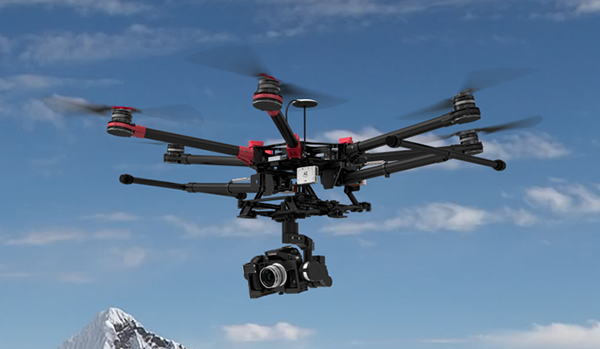
The S900 Spreading Wings Hexcopter
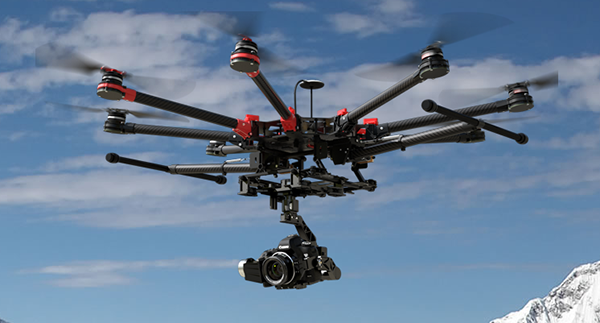
The s1000+ Spreading Wings Octocopter
The DJI “Spreading Wings” hex/octo airframes are probably the most popular and well-known of the big dollar heavy-lifters out there. DJI has put a lot of time and research into developing a study and dependable airframe, gimbal and electronic components in these copters.
The S900 is a hex design capable of a 6.8kg payload, including a Zenmuse gimbal and 12,000mAh battery and flight times up to 18 minutes. The airframe collapses and fits in a case that can be setup and ready to fly in minutes, and also features retractable landing gear for a full 360-degree visibility with your camera.
The S1000+ is an octo design, also with retractable landing gear and capable of a larger payload of 11kg so larger gimbals and DSLRs like the 5D MkIII can be carried for up to 15 minutes with 15,000mAh 6S battery.
Both of these heavy-lifters can be configured as single or dual-operator production copters.
• CineDrones Cinema HL X8 “Red Epic” Kit
The CineDrones Cinema HL X8 is the most complete and comprehensive (and expensive) aerial package available. Professional from the ground up, the Cinema HL X8 handles payloads up to 15lbs with the Movix 3-Axis Gimbal and can fly cameras such as RED Epic, Dragon 6K, FS700, BMCC, 5D, D800, C300 and more.
This is the drone you will most likely see on motion picture sets when you need to get the shots, from beaches to yachts, car chases to explosions the Cinema X8 HL will capture every second like never before. This is serious filmmaking gear, indeed!
CineDrones now offers a complete handheld and aerial conversion, in under 15 minutes you can convert the Movix aerial gimbal to the Movix handheld gimbal and take the production to a level never before see from the air to the ground.
CONTINUED NEXT PAGE –>
5. Fixed Wing and Hybrids – Professional Mapping/Geological Surveying
For those who want to cover larger areas to collect mapping data or create tiled images for precision agriculture or geological study, a fixed-wing craft will cover more acreage than a traditional multirotor and have longer flight times. Most of these options are more affordable than you might expect, but not that flying these craft will require a significant amount of training and practice to become proficient in operation.
• BirdsEyeView Aerobotics FireFLY6 Hybrid
The BirdsEyeView Aerobotics FireFLY6 is a hybrid airframe, with the ability to takeoff and land vertically, hover and maneuver like a multicopter, and transition to efficient forward flight. The FireFLY6 is a first of its kind for the RC, FPV, and hobby aerobotics communities.
The design of the FireFLY6 is unique to typical fixed-wing craft as the foam-based airframe has a Y6 prop configuration for vertical take off and landing, or the ability to hover like a drone; plus the added chain-driven cam that rotates the motor shaft forward to fly like a regular fixed-wing craft. This design reminds me a bit of the V-22 Osprey used by the Navy.
I’ve seen different camera configurations with this craft, including a to-person system with a separate gimbal operator and flight controller. I’m really excited to see where this company is going and hope to have a chance to test one of these early in 2015.
• 3DR AERO/AERO-M
3DR (3D Robotics) has been a leader in autonomous RC flight for several years now, and one of their premiere surveying and mapping craft is their AERO, whcih comes in two RTF (Ready To Fly) configurations, available directly from their website.
The 3DR AERO is their base configuration fixed-wing craft that provides 40-minutes of Pixhawk-powered GPS autonomous flight in their sturdy customized Skywalker reinforced foam airframe. This kit also includes all the electronics, motors, control linkages, servos, 6000mAh LiPo battery, 3DR radio air and ground modules and Micro-USB ground station adapter for use with laptop or tablet device. You can add an optional radio control and OSD/FPV system and still have an excellent craft for under $2000. (not including camera)
The 3DR AERO-M is an all-in-one solution for creating high-resolution visual-spectrum aerial maps. The fixed-wing platform offers incredible endurance and scope of coverage, with 40 minutes of flight time and up to 250 acres of coverage area. It’s the perfect platform for regularly acquiring highly detailed and actionable data for large-scale operations such as farming, construction and conservation, as well as search and rescue and emergency response. Built on a lightweight and robust foam frame, which translates to less risk and cost per flight and multiplies the cost-effectiveness of our platform.
The Aero-M package includes a Canon S100 high-resolution 12 MP camera and the powerful image processing tool, Pix4Dmapper LT 3DR Edition software, to create highly accurate, georeferenced and orthorectified mosaics. The Aero-M ships in a custom-designed hard-top travel case to keep all the components of the mapping system protected and easily accessible, ensuring that you’re always ready to map. This is a serious, professional package for 2D and 3D mapping over a large area.
• SenseFly eBee
The SenseFly eBee is a fully-autonomous foam wing drone that can capture aerial photos or generate 3D models and orthomosaics. It’s easy to fly as it’s fully autonomous with a flight plan you upload from a tablet and can cover up to 12 sq miles in a single flight/
It’s manageable and lightweight (700g/1.5lbs) and comes with its own built-in 16MP camera, carry case and software package. The eMotion 3D mission software will take elevation data into consideration when setting the waypoints of your mission plan. You can also reprogram your flight plan during the flight through the tablet.
Misc Cameras, Gear and Accessories
While some of the suggested UAV craft options come complete with everything you need, including a built-in camera, many of them don’t and I get asked more times than not what I think about certain cameras for aerial photos and video.
Of course, my standard go-to aerial camera is going to be the GoPro HERO4 Black. It’s the latest and greatest and if you want either 4K at 24/25/30fps or 1080p at 120fps, this is going to be your best choice. Not only for the price ($499) but for the size and form factor. You can also pick up a GoPro HERO3+ for a decent price too and modify it with some aftermarket lenses to remove the fisheye distortion.
There are also several options for adding an ND filter to your GoPro to get better results in bright light or high-contrast environments.
Another standard for medium-lift copters such as the SteadiDrone MAVRIK or the DJI S900 would be the Sony NEX5/7. It shoots either 24MP stills up to 10fps, or 1080p 24/60p AVCHD video and provides really clear quality images. This works with the DJI Zenmuse Z15 gimbal that’s built specifically for this camera and only a couple other options.
I’m going to be testing the Blackmagic Design Pocket Cinema Camera with the Olympus M. Zuiko Digital 17mm f/2.8 lens to use with the SteadiDrone MAVRIK in upcoming reviews. Stay tuned to my channel for the results!
Of course as you move up the chain you’re getting into DSLRs and RED categories, which we won’t cover the specifics here, but do know that for every camera option there is usually a specific lens that you MUST use so the gimbal will be balanced properly. You’ll need to check with the manufacturers for each option and discover what works best for your needs.
And to protect your investment, many resellers and manufacturers offer a case option with your purchase, but if they don’t then check out the Go Professional line of cases with custom inserts for your specific model.
And for the adventurer in you, you might try some Fat Shark FPV goggles or let your co-pilot wear them to control the camera gimbal on a two-man setup. If you’re flying the DJI P2 Vision+ then you might look into the Espon Moverio BT-200 Smart Glasses that I did a review on here on PVC awhile ago.
And for your iPad Air or iPad mini out in the field, you’re going to want The Padcaster. The aluminum frame that surrounds the protective formed tablet mount has a ton of threaded holes to mount to a tripod or add accessories, such as your telemetry receiver or antennae.
_____________________________________________________________________________________
Jeff Foster is a published author of several how-to books and training videos in the motion graphics, animation and video production industries and is an award-winning video producer and artist. Visit his web site to learn more about his training methods, tips & tricks at PixelPainter.com

Filmtools
Filmmakers go-to destination for pre-production, production & post production equipment!
Shop Now